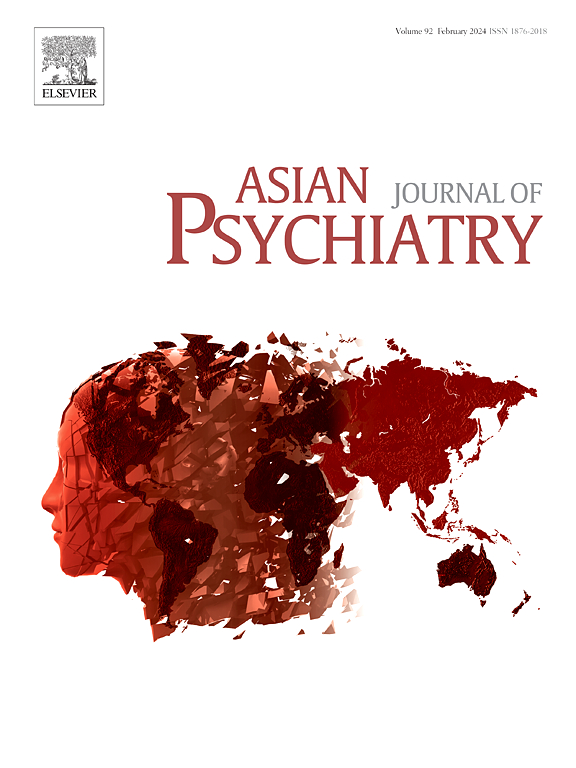Prevalence of subthreshold depression in older adults: A systematic review and meta-analysis
IF 3.8
4区 医学
Q1 PSYCHIATRY
引用次数: 0
Abstract
Background
The prevalence of subthreshold depression (StD) in older adults shows considerable variation across studies. This study aimed to determine the prevalence of subthreshold depression in elderly people.
Methods
We conducted a thorough literature search across multiple databases, including PubMed, Web of Science, Medline, Cochrane Library, SinoMed, Wan Fang Data, CNKI, and VIP. Statistical analyses were carried out using STATA version 16.0. Our study was prospectively registered with PROSPERO (CRD42023494210).
Results
Seventy-seven studies involving 225,232 individuals were included in this meta-analysis. The overall prevalence of subthreshold depression was 18.6 % (95 % CI: 16.0 %-21.2 %, I2 =99.8 %, p<0.001. Subgroup analyses showed the prevalence of StD in older adults varied depending on the screening tools used and the continent of the study. Funnel plots and Egger's test did not reveal any significant publication bias (Egger's test: p = 0.057).
Conclusion
The prevalence of subthreshold depression in older adults is high, suggesting attention needs to be paid to the mental health of the elderly. To prevent a larger public health issue, it is imperative to implement timely and effective preventive measures and interventions, focusing on early detection and intervention.
老年人阈下抑郁症的患病率:系统回顾和荟萃分析。
背景:阈下抑郁症(StD)在老年人中的患病率在不同研究中存在很大差异。本研究旨在确定阈下抑郁症在老年人中的患病率:我们在多个数据库中进行了全面的文献检索,包括 PubMed、Web of Science、Medline、Cochrane Library、SinoMed、万方数据、CNKI 和 VIP。统计分析采用 STATA 16.0 版本。我们的研究在 PROSPERO(CRD42023494210)进行了前瞻性注册:本次荟萃分析共纳入了 77 项研究,涉及 225232 人。阈下抑郁症的总患病率为 18.6%(95% CI:16.0%-21.2%,I2 = 99.8%,pConclusion):老年人亚阈值抑郁症的发病率很高,这表明需要关注老年人的心理健康。为了防止出现更大的公共卫生问题,必须采取及时有效的预防措施和干预措施,重点是早期发现和干预。
本文章由计算机程序翻译,如有差异,请以英文原文为准。
求助全文
约1分钟内获得全文
求助全文
来源期刊

Asian journal of psychiatry
Medicine-Psychiatry and Mental Health
CiteScore
12.70
自引率
5.30%
发文量
297
审稿时长
35 days
期刊介绍:
The Asian Journal of Psychiatry serves as a comprehensive resource for psychiatrists, mental health clinicians, neurologists, physicians, mental health students, and policymakers. Its goal is to facilitate the exchange of research findings and clinical practices between Asia and the global community. The journal focuses on psychiatric research relevant to Asia, covering preclinical, clinical, service system, and policy development topics. It also highlights the socio-cultural diversity of the region in relation to mental health.
 求助内容:
求助内容: 应助结果提醒方式:
应助结果提醒方式:


